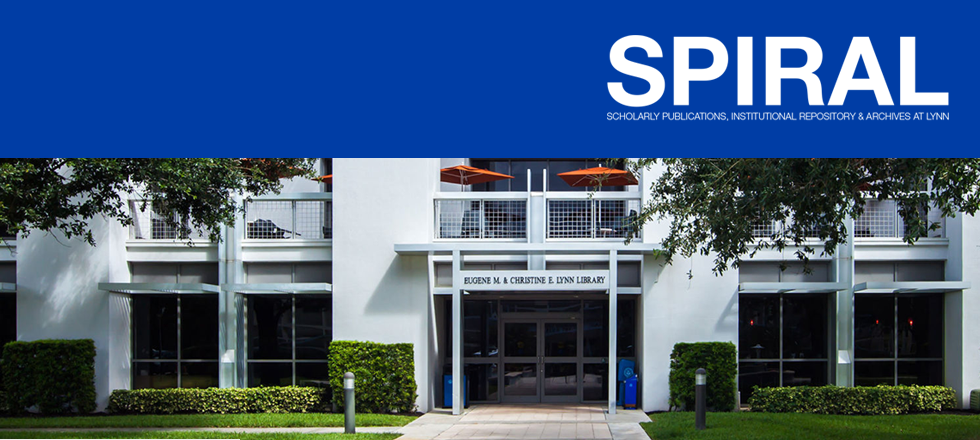Graduate Student Dissertations, Theses, Capstones, and Portfolios
Date of Award
12-2008
Document Type
Dissertation
Granting Institution
Lynn University
Degree Name
Doctor of Philosophy (Ph.D.)
Degree Program
Global Leadership - with a specialization in Corporate and Organizational Management
Department
College of Business and Management
First Advisor
Dr. Joan Scialli
Second Advisor
Dr. Adam L. Kosnitzky
Third Advisor
Dr. James Wright
Abstract
Traditionally, volunteerism has been deeply embedded in United States history with citizens showing a high level of social participation. In the United States there are 60.8 million volunteers, however, the supply of volunteer labor has been insufficient to meet the demands of organizations with recent reports showing a decrease. Trends as far back as the 1980s indicated that budgetary constraints coupled with increasing demands makes volunteering the logical alternative to sustain service delivery.
Many community, civic, and governmental organizations need and use volunteers to accomplish their missions. One of the greatest challenges, however, is ensuring that the volunteers remain satisfied and committed to continuously fill much needed positions in community programs. While volunteer recruitment and retention can have an enormous impact on an organization, the relationships among volunteer motives, satisfaction, organizational commitment and intention to leave have been cited as a deficiency in literature.
The purpose of this non-experimental, quantitative, exploratory (comparative) and explanatory (correlational) research design was to answer research questions and test a hypothesized model about the characteristics of volunteers, organizational characteristics, motives for volunteering, satisfaction, and intention to leave Marion County government. The entire population of approximately 500 Marion County government volunteers located in Ocala, Florida, was invited to participate. The data producing sample consisted of 229 (response rate = 89%).
A six-part survey was used to measure motives for volunteering, satisfaction, organizational commitment and intention to leave. Clary's et al. (1998) Volunteer Functions Inventory was used to measure motives for volunteering. An adaptation of Penner and Finkelstein's (1998) 3-item Satisfaction survey measured satisfaction. Organizational commitment was measured by Mowday, Steers, and Porter (1979) Orgarzizational Commitment Questionnaire (OCQ). Intention to Leave was measured using Weisberg's' (1994) 3-item survey. Varimax rotation was used to further establish construct validity of the VFI. This resulted in a 28-Item Volunteer Functions Inventory Revised scale consisting of 5 factors, Protective and Enhancement (9 items), Understanding (6 items), Values (4 items), Career (5 items), and Social (4 items). Exploratory factor analyses also resulted in a revised 2-Item Satisfaction scale, an &Item Organizational Commitment Questionnaire, and a revised 2-Item Intention to leave scale. Coefficient alphas resulted in good estimates of reliability of the scales used in the study.
Hypotheses testing resulted in findings that: (a) Motives for volunteering (VFI Understanding and Values) are significant explanatory variables explained a range of 12.4% to 13.2% of the variation of organizational commitment; (b) Motives for volunteering (VFI Understanding, Values, and Protective and Enhancement) are significant explanatory variables explained a range of 15.6 % to 16.4% of the variation of satisfaction; (c) Motives for volunteering (VFI Social) explained a range of 1.4% to 1.8% of the variation of intention to leave; (d) Characteristics of volunteers (age), motives for volunteering (VFI Social), and organizational commitment explained a range of 16.3% to 17.5% of the variation of intention to leave volunteering in Marion County government. Although the Social function was found to be significant, this inconsistent with the findings of Clary et al. (1998) who found that the Social function was one of the less significant functions in a study of motives for volunteering of elderly volunteers. Future research should explain the relationships among volunteer motives, organizational commitment, satisfaction, and intention to leave on a broader scale in other government jurisdictions as well as a larger geographical area to strengthen the generalizability, and further psychometric evaluation of all scales used in this study should be conducted to examine the dimensionality of these scales.
Recommended Citation
Salas, G. R. (2008). Volunteer Functions, Satisfaction, Commitment, and Intention to Leave Government Volunteering [Doctoral dissertation, Lynn University]. SPIRAL. https://spiral.lynn.edu/etds/214
Included in
Civic and Community Engagement Commons, Community Psychology Commons, Experimental Analysis of Behavior Commons




Comments
This dissertation was digitized from the printed and bound volume in the summer of 2017. To protect privacy and copyright, this PDF may contain redacted pages, personal information, and/or signatures. For a complete, unedited version of the volume, please contact the University Archives.